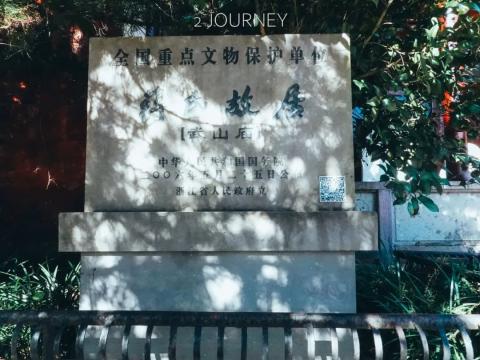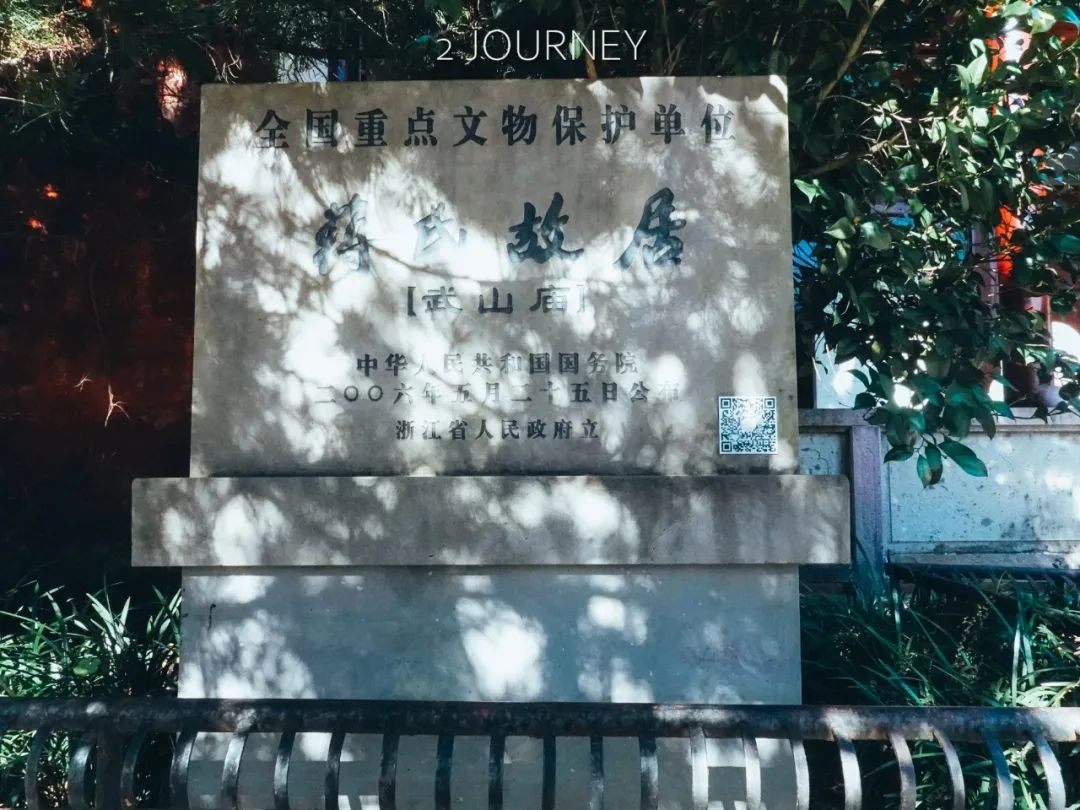
11.25
The original itinerary was to drive to Zhujiajian Pier in the morning and take a boat to Dongji Island, but the news showed that there was a close contact on Putuo 21, so we had to give up.
An aimless day.
First go to Xikou Jiang’s house for a walk.
Parking is free.
Wushan Temple is located at the southern foot of Wushan Mountain. It was originally a temple in the mid-Qing Dynasty architectural style shared by the five surnames of Jiang, Zhang, Dan, Song and Ren in Xikou Town. It was used for weddings and weddings. In 1916, Chiang Ching-kuo initiated his studies here.



Wuling Gate is the gateway to Xikou Town. Before 1929, it was a small nunnery. In 1930, it was rebuilt by Chiang Kai-shek into a three-bay, two-story Wuguan-style city gate building. The inscription "Wuling" is engraved on both sides of the door. The front is written by Yu Youren, a veteran of the Kuomintang and a famous calligrapher, and the back is written by Chiang Kai-shek himself.



The epidemic has had a huge impact on the tourism industry. Wulingmen, which used to be crowded with tourists, was deserted.
Wuling Middle School was founded and named by Chiang Kai-shek on July 10, 1927.

In 10 years ago, a ticket gate was set up in front of Wuling Gate to collect tickets. Now the ticket price of 120 yuan/person has not changed, but only the scenic spots (Wenchang Pavilion, Yanxi Xiaozhu, Jiang's Ancestral Hall, Fenghao Fang, Xikou Museum, Jiang Mu Cemetery, etc.) require a ticket to enter, and the streets are free.


Wenchang Pavilion on the hillside on the left.


Wenchang Pavilion, also known as Kui Pavilion and Le Pavilion, was built in the ninth year of Yongzheng in the Qing Dynasty (1731). In 1924, it was rebuilt into a two-story building with an area of 500 square meters. It was Chiang Kai-shek's private villa and library. On December 12, 1939, Wenchang Pavilion was bombed by Japanese aircraft. The current building was rebuilt on the original site in 1987.




The 215-year-old liquidambar tree has red leaves.


The small stone bridge where the Chiangs and his wife watched.
The poem says: "The water of Bitan Lake is shining with light." The water of Yan River is clear and green, and the ancient trees are red and yellow. The scenery here is beautiful.


Xikou Old Street

The Jiang Ancestral Hall is a family ancestral building built in the mid-Qing Dynasty. It is a place where the Jiang family worships their ancestors and sages. It is a place where the Jiang family on Xikou Street worships their ancestors, performs plays, gathers people and holds other weddings and funerals during traditional folk festivals such as Spring Festival and Qingming Festival.




The former residence of Chiang Kai-shek includes Fenghao House, small bungalow and Yutai Salt Shop. Among them, Fenghao House is located in Xikou Middle Street, covering an area of 4,800 square meters, with a total construction area of 1,850 square meters. The gate, residence, newspaper hall and independent small building are original and were built in the Qing Dynasty.



When I first came to Xikou in 1992, there was a stone tablet in the courtyard of Fenghaofang that said "Wash blood with blood."
Further ahead is the Yutai Salt Shop, the birthplace of Chiang Kai-shek.
Since I had been to Xikou twice before, I wandered around the streets for a while. I couldn't find Xikou Thousand Layer Cake, so I turned back to pick up the car and headed towards Ningbo.
The navigation led to Tendo Temple.



Tiantong Temple is located in Dongwu Town, Yinzhou District, Ningbo. It was built in the first year of Yongkang (300 AD) in the Western Jin Dynasty. It is the third mountain among the five mountains of Zen Buddhism and is known as the "Southeast Buddhist Kingdom".



The first six towers of Neiwangong Pool


The Tianwang Hall was rebuilt in 1936.


The Buddhist hall was built in 1635 (the eighth year of Chongzhen in the Ming Dynasty) and is the oldest building in the temple.



Ashoka Temple is located in Wuxiang Town, Yinzhou District, Ningbo. It was first built in the third year of Taikang (AD 282) of Emperor Wu of the Western Jin Dynasty. In the fifteenth year of Hongwu (1382) of the Ming Dynasty, the Emperor Taizu of the Ming Dynasty named it "Ashoka Zen Temple" and ranked it as one of the five Zen mountains in the world. The fifth mountain.
The temple houses the true body relics of Sakyamuni and the exquisite relic pagoda.



The only two remaining Yuan Pagodas in Zhejiang Province - the West Pagoda

Release Pond and Heavenly King Hall


The main hall was rebuilt during the Kangxi period of the Qing Dynasty. There is a plaque written by Qianlong on the hall that reads "Jue Xing Jie Yuan".

The Relic Hall was built in 1678. It has double eaves, a yellow glazed tile roof, a stone relic pagoda, and a built-in pavilion inlaid with seven treasures.


bell tower.

(Jingshan Temple, Lingyin Temple, Jingci Temple in Hangzhou, Tiantong Temple and Ashoka Temple in Ningbo are the five mountains of Zen)
After coming out of Ashoka Temple, I thought about it better to go home and spend some time there, so I took the expressway and reached home two hours later.
